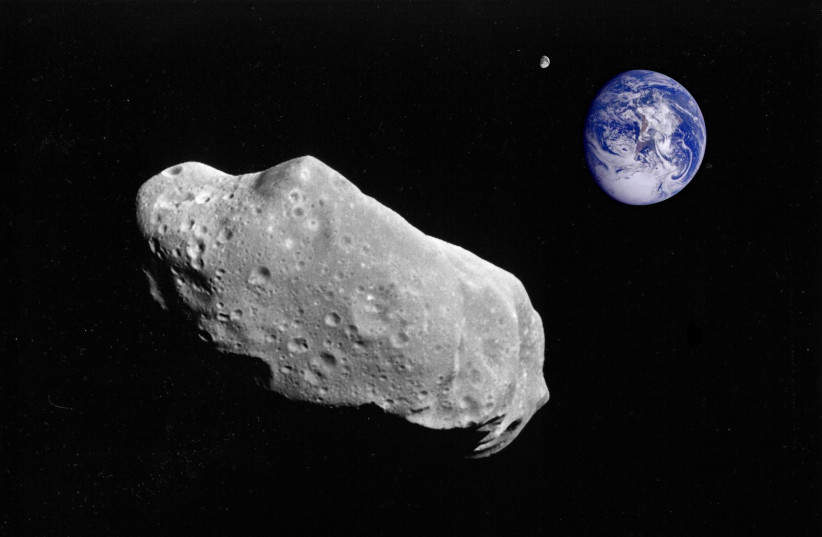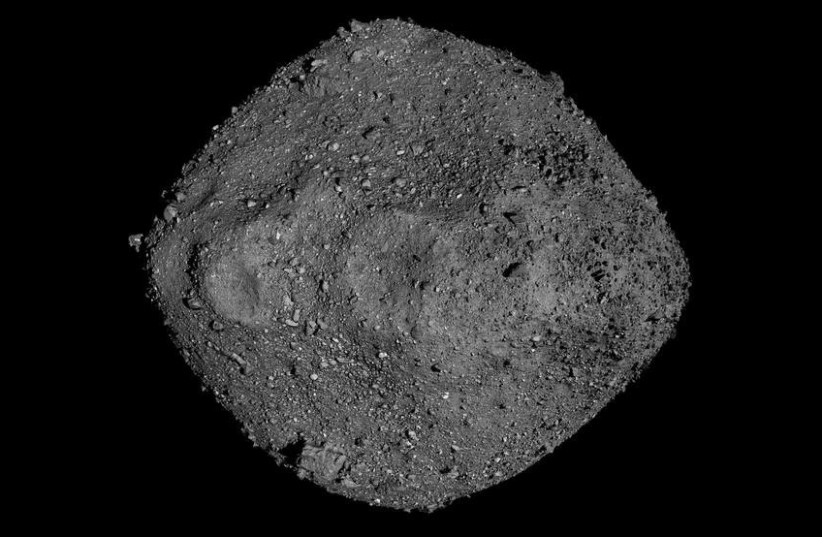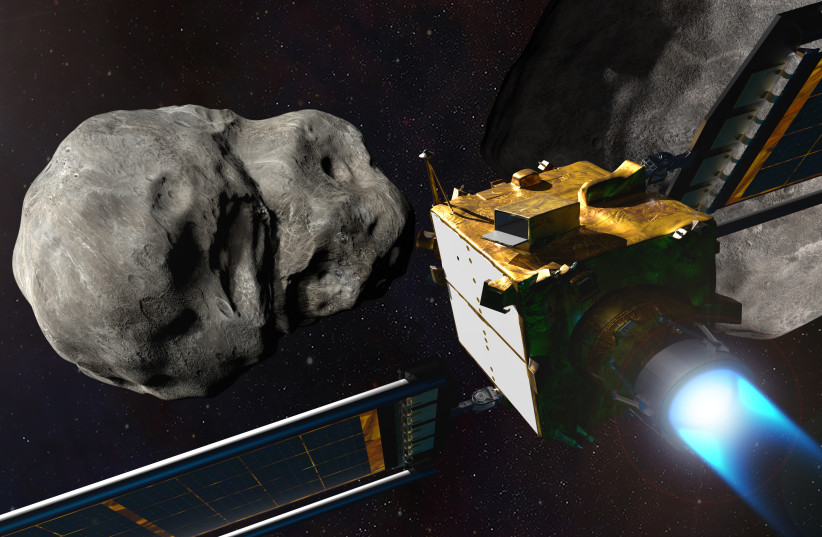Three asteroids are set to pass by the Earth on Tuesday, September 20, one of which is the size of a bridge and the other two being twice the lengths of a London bus, according to NASA's asteroid tracker. Though they likely won't impact the planet, one of these asteroids is still coming noticeably closer than average.
<br>Which asteroid is coming towards Earth?
The three asteroids in question have been designated 2022 SC1, 2022 SW1 and 2022 SH, according to the Center for Near-Earth Object Studies (CNEOS) at NASA's Jet Propulsion Laboratory (JPL). The three asteroids are relatively small, with the first estimated to be as much as 43 meters in diameter, while the other two asteroids are both 18 meters wide at most.
<br>How big is the asteroid coming towards Earth in 2022?
Asteroid 2022 SC1 is considerably larger than the other two and has an estimated width ranging from 19 meters to 43 meters.
To put that in perspective, at its largest estimated size, asteroid 2022 SC1 is around the size of the Ha'Penny Bridge in Ireland.

Asteroid 2022 SC1 is also the fastest of the bunch, barreling ahead at a speed of approximately 10.27 kilometers per second. That's equal to around 36,972 kilometers per hour or almost 30 times the speed of sound.
For context, that's 30 times as fast as a handgun bullet.
The other two asteroids, 2022 SW1 and 2022 SH, were smaller by comparison, both estimated to be between eight meters and 18 meters.
At their maximum size of 18 meters, these two asteroids are both around twice the length of a London bus.
In terms of speed, however, 2022 SW1 is clearly the faster asteroid, clocking in even faster than asteroid 2022 SC1. Asteroid 2022 SH, however, is a bit slower, clocking in around a modest 7.60 kilometers per second, though that speed is still nothing to scoff at.
<br>Will an asteroid hit Earth in 2022?
If an asteroid does hit the Earth in 2022, it won't be any of these three, with NASA's calculations predicting all three asteroids will safely pass us by.
Out of all of them, asteroid 2022 SW1 is set to pass the closest to the planet at around 677,678 kilometers away from the Earth. This is actually very close, all things considered, and falls well under 1 million kilometers. But despite this, it's still in no danger of hitting us. To elaborate, the Moon orbits the Earth at a modest distance of 384,000 kilometers on average, still closer than asteroid 2022 SW1.
But even if one of these asteroids did hit, it still wouldn't do much damage.
According to information provided by the Davidson Institute of Science, the educational arm of Israel's Weizmann Institute of Science, an asteroid that's over 140 meters wide or more impacting the Earth would be at least a thousand times stronger than the nuclear bomb dropped on Hiroshima.
But an even larger asteroid over 300 meters in diameter, something like the Apophis asteroid, would be strong enough to devastate an entire continent. An asteroid that is over a kilometer wide – like asteroid 138971 (2001 CB21), which flew past the Earth in early March 2022 – could trigger a worldwide cataclysm.
Neither of these three asteroids come close to this threshold, so any damage that would happen would be minimal at best.
But will an asteroid ever impact the Earth in 2022? The answer is certainly yes. Or rather, yes, it already happened.
Back in mid-March 2022, asteroid 2022 EB5, a small asteroid around half the size of a giraffe, actually struck the Earth. However, because it was so small, it didn't cause any damage.
<br>When is the next asteroid predicted to hit the Earth?
Thankfully, not for a very long time, at best. In fact, NASA has already concluded that there is zero risk of a catastrophic asteroid impact on Earth for the next century.

What might be the next asteroid to hit Earth?
There are some possible candidates.
Currently, one asteroid recognized by NASA as being one of the most dangerous asteroids is the 500-meter-wide asteroid Bennu. If this massive asteroid ever impacts the Earth, the result would likely be catastrophic - but as far as NASA is aware, this won't be for a long time, if ever.

Do we have any way to stop an asteroid from hitting the Earth?
It's a strong possibility, particularly with the field of asteroid deflecting.
The field of planetary defense is specifically organized to find ways of keeping the Earth safe from asteroids and scientists at NASA and across the world are hard at work trying to do just that.
Currently, the most promising of these efforts is NASA's Double Asteroid Redirection Test (DART) mission, which will see a small specially-designed spacecraft slam into an asteroid to see if it can possibly alter its orbit ever so slightly, which is what asteroid deflection is. But time will tell if this will prove effective.
The DART Mission is set to reach its target, the asteroid Dimorphous in the Didymous system, on September 26.
